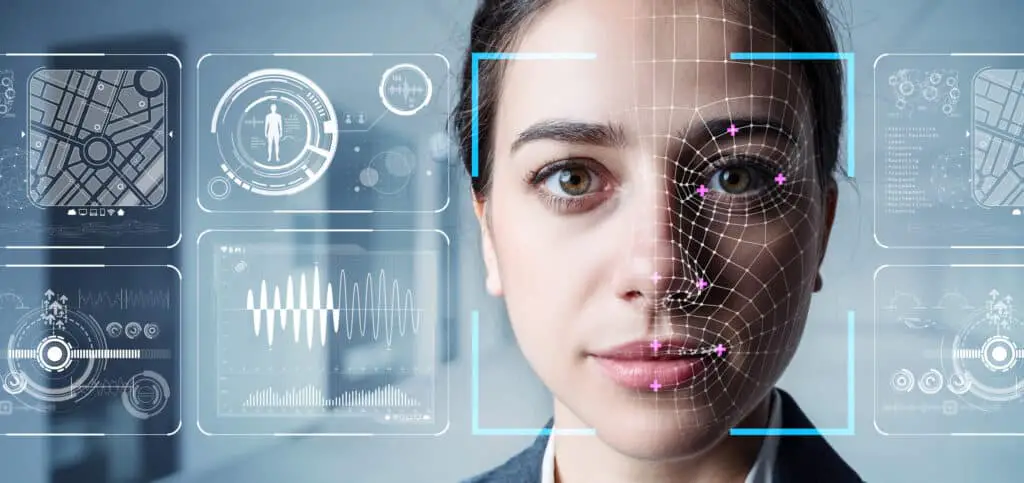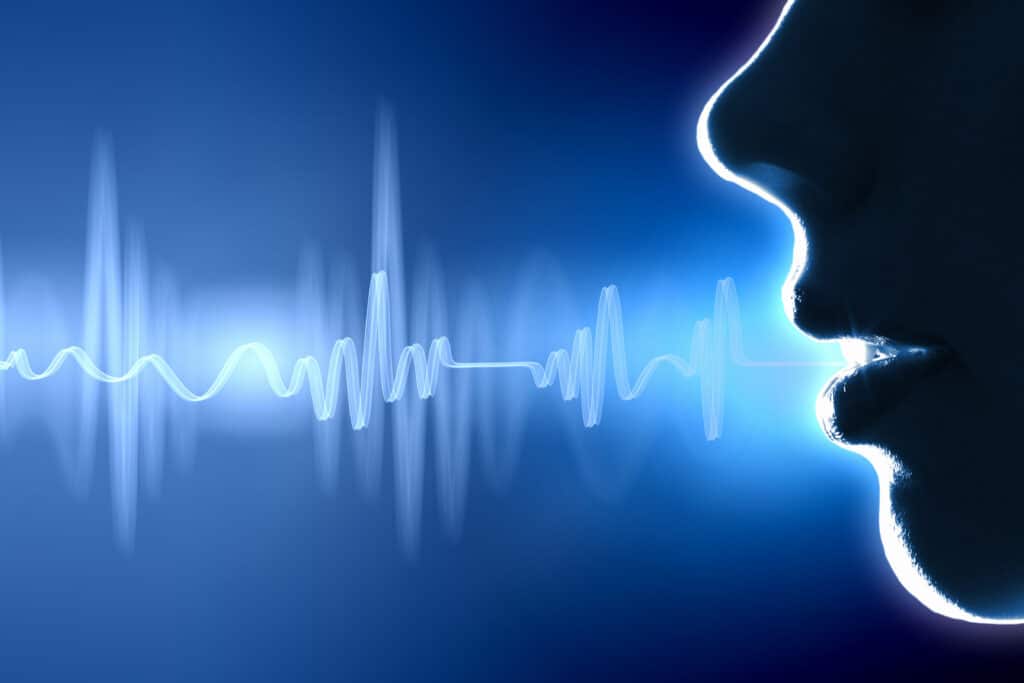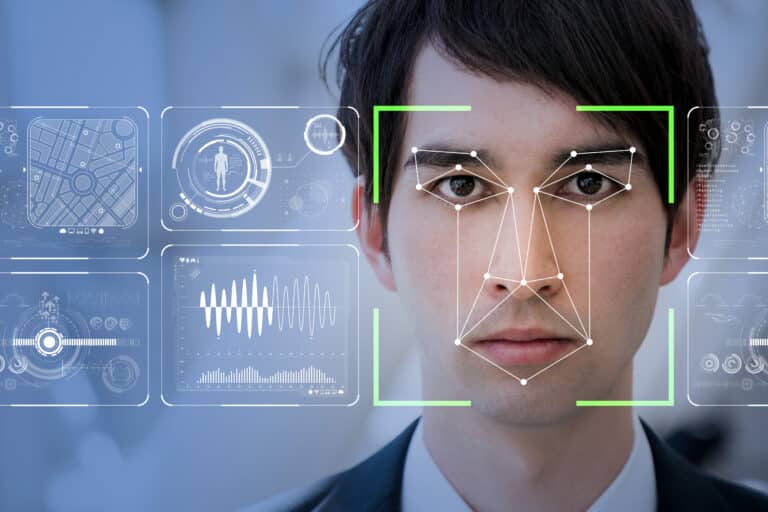Introduction
How Does Voice Recognition Biometrics Work: Voice recognition biometrics is a technology that has gained significant attention in recent years. It is a method of identifying individuals based on their unique voice patterns and characteristics. This technology has become increasingly popular due to its convenience and high level of security. In this article, we will explore how voice recognition biometrics works and its various applications.
Voice recognition biometrics testing works by analyzing the unique characteristics of an individual’s voice, such as pitch, tone, and pronunciation. Voiceprint enrollment is necessary to use speech recognition biometric systems. To capture and evaluate speech characteristics, the user speaks a series of prepared phrases or words.
The person’s voice is compared to their voiceprint during authentication. The technology compares the speaker’s voice to the voiceprint. If the match is within a threshold, the person gets admitted. Access is denied if there is no match or matches below the threshold.

How does voice recognition work?
Voice recognition is a technology that allows computers or devices to understand and interpret human speech. It is a form of artificial intelligence that has become increasingly popular in recent years, with the rise of virtual assistants like Siri, Alexa, and Google Assistant. But how exactly does voice recognition work?
At its core, voice recognition relies on a combination of hardware and software to convert spoken words into written text or commands. The process begins with a microphone, which captures the sound waves produced by the human voice.
Once the electrical signals are received, the voice recognition software takes over. This software uses complex algorithms and machine learning techniques to analyze the signals and identify patterns that correspond to specific words or phrases. It compares the patterns it detects to a vast database of known words and phrases, allowing it to recognize and interpret the spoken language.
One of the key components of voice recognition technology is the use of acoustic models. This training allows the software to better understand and interpret a wide range of speech patterns and variations.
Another important aspect of voice recognition is the use of language models. These models help the software understand the context and meaning of spoken words by taking into account factors such as grammar, syntax, and vocabulary. By combining acoustic and language models, voice recognition systems can accurately transcribe speech and carry out commands.
How accurate is voice recognition biometrics?
Voice recognition biometrics is a technology that uses an individual’s unique voice patterns to verify their identity. It has gained popularity in recent years as a convenient and secure method of authentication. However, the accuracy of voice recognition biometrics can vary depending on several factors.
Firstly, the accuracy of voice recognition biometrics depends on the quality of the voice sample. Factors such as background noise, microphone quality, and the speaker’s distance from the microphone can all affect the accuracy of the system. If the voice sample is of low quality or contains a lot of noise, the system may struggle to accurately identify the speaker.
Secondly, the accuracy of voice recognition biometrics can be influenced by the individual’s voice itself. Some people have more distinct and easily recognizable voices, while others may have more generic or similar-sounding voices. This can impact the system’s ability to accurately distinguish between different individuals.
For example, if a person has a cold or is experiencing vocal strain, their voice may sound different than usual, which could lead to inaccuracies in the system’s recognition.
It is important to note that while voice recognition biometrics can be a highly accurate method of authentication, it is not foolproof. Like any biometric technology, there is always a small chance of false positives or false negatives. Therefore, it is often recommended to use voice recognition biometrics in conjunction with other forms of authentication, such as passwords or fingerprint scans, to enhance security.
What is the difference between voice recognition and voice biometrics?
Voice recognition and voice biometrics are two terms that are often used interchangeably, but they actually refer to different technologies. While both involve the use of voice as a means of identification, there are some key differences between the two.
Voice recognition is a technology that is used to identify and authenticate individuals based on their voice patterns. It involves the analysis of various characteristics of a person’s voice, such as pitch, tone, and rhythm, to create a unique voiceprint.
One of the main differences between voice recognition and voice biometrics is the level of security they provide. Voice biometrics, on the other hand, offers a higher level of security as it takes into account more unique characteristics of an individual’s voice.
Is voice recognition biometric data?
These characteristics include fingerprints, iris patterns, facial features, and voice patterns. Voice recognition technology analyzes the unique characteristics of an individual’s voice, such as pitch, tone, and pronunciation, to create a unique voiceprint.
Voice recognition technology has gained significant popularity in recent years due to its convenience and security.
One of the key advantages of using voice recognition as a biometric identifier is its non-intrusive nature. Unlike other biometric data, such as fingerprints or iris scans, voice recognition does not require physical contact or specialized equipment.
However, it is important to note that voice recognition technology is not foolproof and can be susceptible to certain limitations. Factors such as background noise, illness, or changes in voice due to aging can affect the accuracy of voice recognition systems.
What type of biometrics is voice recognition?
Voice recognition technology works by capturing and analyzing various vocal features, including pitch, tone, rhythm, and pronunciation.
One of the main advantages of voice recognition as a biometric technology is its convenience and ease of use. Unlike other biometric modalities, such as fingerprint or iris recognition, voice recognition does not require physical contact or the use of specialized hardware.
Another advantage of voice recognition is its non-intrusive nature. Unlike other biometric modalities that may require physical contact or the collection of sensitive personal information, voice recognition can be performed remotely and without the need for physical interaction.
This makes it a more user-friendly and privacy-conscious option for identity verification.
However, voice recognition also has its limitations and challenges. One of the main challenges is the variability of the human voice.
Voice recognition biometrics is based on the technology of analyzing and identifying unique characteristics in an individual’s voice. It utilizes a combination of acoustic and linguistic features to create a voiceprint, which is a unique representation of an individual’s voice. This technology relies on the fact that each person has distinct vocal characteristics, such as pitch, tone, and pronunciation, that can be used to differentiate them from others.
The process of voice recognition biometrics involves capturing a person’s voice sample and extracting various features from it. These features are then compared to a pre-existing voiceprint database to determine the identity of the individual. The technology behind voice recognition biometrics has advanced significantly in recent years, with the development of sophisticated algorithms and machine learning techniques that can accurately analyze and match voiceprints.
How does voice recognition biometrics authenticate individuals?
Voice recognition biometrics authenticate individuals by analyzing their unique vocal characteristics. When a person speaks, their voice produces a distinct pattern of sound waves that can be captured and analyzed. This pattern includes various factors such as pitch, tone, rhythm, and pronunciation.
To authenticate individuals, voice recognition systems compare the captured voiceprint with the stored voiceprints in their database.
What are the advantages of using voice recognition biometrics compared to other biometric authentication methods?
Voice recognition biometrics offers several advantages over other biometric authentication methods. One of the key advantages is its convenience. Unlike other methods such as fingerprint or iris scanning, voice recognition does not require any physical contact or special hardware. Users can simply speak into a microphone, making it a non-intrusive and user-friendly authentication method.
Another advantage of voice recognition biometrics is its universality. Furthermore, voice recognition biometrics offers a high level of security. The human voice contains a wide range of unique characteristics, including pitch, tone, and pronunciation. These characteristics can be analyzed and used to create a voiceprint, which is a digital representation of an individual’s voice. Voiceprints are highly secure and difficult to replicate, making voice recognition biometrics a reliable authentication method.
Can voice recognition biometrics be easily fooled or hacked?
Voice recognition biometrics, like any other biometric authentication method, is not foolproof and can be susceptible to certain vulnerabilities. While voice recognition technology has advanced significantly in recent years, it is still not completely immune to being fooled or hacked.
One of the main challenges with voice recognition biometrics is the potential for voice spoofing or impersonation. This involves an attacker trying to mimic the voice of an authorized user in order to gain unauthorized access. However, advancements in voice recognition algorithms have made it increasingly difficult for attackers to successfully spoof a voice.
Another potential vulnerability is the use of voice recordings. If an attacker is able to obtain a high-quality recording of an authorized user’s voice, they may be able to use it to bypass the voice recognition system. However, many voice recognition systems have implemented measures to detect and prevent the use of pre-recorded voices, such as analyzing the unique characteristics of a live voice.
Are there any limitations or challenges associated with implementing voice recognition biometrics?
Yes, there are several limitations and challenges associated with implementing voice recognition biometrics. One major limitation is the variability in an individual’s voice due to factors such as age, health conditions, and emotional state. This variability can affect the accuracy and reliability of voice recognition systems, leading to false acceptances or rejections. Additionally, background noise and environmental factors can also impact the performance of voice recognition biometrics, making it less effective in noisy or crowded environments.
Another challenge is the vulnerability of voice recognition biometrics to spoofing attacks. This highlights the need for continuous improvement and innovation in voice recognition technology to stay ahead of potential attacks.

Conclusion
Voice recognition biometrics is a fascinating technology that has revolutionized the way we interact with devices and systems. By analyzing the unique characteristics of an individual’s voice, this technology can accurately identify and authenticate users. In this conclusion, we will summarize the key points discussed in this article and highlight the significance of voice recognition biometrics in various industries.
Firstly, voice recognition biometrics works by capturing and analyzing various vocal features, such as pitch, tone, and rhythm. These features are then converted into a digital representation, known as a voiceprint. This voiceprint is unique to each individual, similar to a fingerprint or a DNA profile. When a user attempts to access a device or system, their voice is compared to the stored voiceprint for authentication.
Secondly, voice recognition biometrics offers several advantages over traditional authentication methods. It is convenient and user-friendly, as users only need to speak into a microphone or a device’s built-in microphone for authentication. This eliminates the need for remembering complex passwords or carrying physical tokens. Additionally, voice recognition biometrics is difficult to forge or replicate, making it highly secure.
Lastly, the applications of voice recognition voice biometrics are vast and diverse. In the banking sector, it can enhance the security of financial transactions and prevent unauthorized access to accounts.
Voice recognition biometrics is a powerful technology that offers secure and convenient authentication solutions. By leveraging the unique characteristics of an individual’s voice, this technology has the potential to enhance security and streamline processes in various industries. As voice recognition biometrics continues to advance, we can expect to see its widespread adoption and integration into our daily lives.

